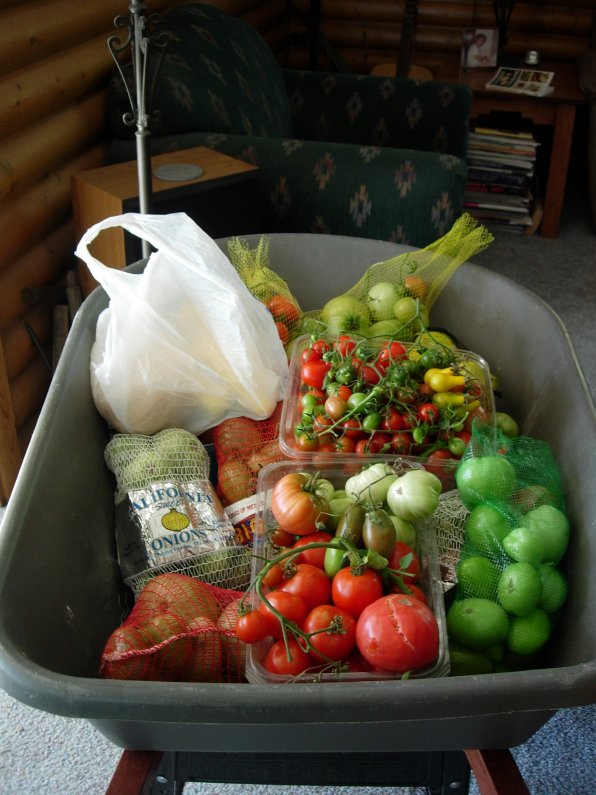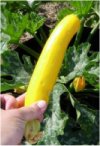
Our outdoor gardens are done, and we’re buttoning up the greenhouses to push our cold weather crops into the winter months. It’s a season of mixed emotions. We’re happy to see the work in the garden wind down and give us a break – especially from the peak activities of harvest – but it is sad to see our vibrant vegetable garden grow old, wither and finally give up the ghost.
Much of what we planted in the spring now sits on the compost pile, ready to be used in the future to help rejuvenate our garden soil. Let’s take this time to create our own mental compost pile and let what we experienced during this year’s growing season help us rejuvenate our success for next year’s vegetable garden. Here are some ideas to think about as winter sets in and we coax our cold hardy vegetables into the early winter months.
Consider the Cultivar
Did you have success with a particular cultivar? Perhaps your success was limited or otherwise disappointing. Take that into consideration when planning crops for next year. As an example, I love bok choi, but I’m not at all impressed with “toy choi” because it’s just too small, even when fully mature. I look at it as a novelty, and not something I’m interested in growing again. If I want a small bok choi plant, I’ll grow one of the full-size varieties and simply harvest it earlier.
Also, after two years experience with “marketer,” a type of greenhouse cucumber, I’m going to try something else. I find that regardless of the size, there is always bitterness, especially near the ends of the fruit. The fruit gets sweeter in the middle and when left to grow to a size that is so large that seeds become an issue. Sure, the variety produces lots of cucumbers, but there is no sense having plenty of what you don’t enjoy.
Too Much to Handle

We love summer squash. We have a taste for traditional zucchini and the bright yellow “butterstick” variety. The only problem is that we tend to plant too much and then we’re overrun with squash. So, next year we’ll be planting a few more cultivars, but only one of each. That will give us different types of squash – green, yellow, patty pan – but in quantities that we can handle with ease.
The same holds true for tomatoes. One year we had 57 tomato plants, mostly of a few varieties that produce large tomatoes. Our last harvest of the season saw us bringing in a wheelbarrow full of tomatoes. I’m not kidding; we brought the wheelbarrow into the house so we could unload our loot in the sunroom and kitchen. There wasn’t a table, window sill, ledge or bench that wasn’t completely covered with ripening tomatoes. Next year, we’ll focus on just a few plants that will provide us the variety we want and quantities we can deal with.
Not Enough of the Good Stuff
I always find a few vegetables that I just didn’t plant in sufficient quantity. Beets come to the top of my list in that regard. Beets have a flavor, texture and general quality that isn’t replicated anywhere in the garden. And, just when I think I’ve had my fill, I look for more to satisfy my desire for greens and sautéed cubes of dark red goodness.
Although collards are one of the many greens, they too have a unique flavor that just can’t be duplicated by kale, Swiss chard or Chinese cabbage. And, I don’t seem to plant enough of them. If you’re from the south, or think you should have been, then you’re a lover of collards as well. Next year, I’m getting more serious about these wonderful greens.
Succession Planting for a Tender Harvest
Many vegetables produce their best results when harvested young. Crops like lettuce, carrots, bunching onions and summer squash are often best when small, young and tender. To achieve this quality of harvest throughout the year, you’ll need to succession plant. My problem is simply that I get carried away with planting, and forget to leave some open ground to plant another row of these types of veggies every couple of weeks. Doing so will provide a continuous flow of vegetables when they’re at their best. Succession planting is also a good technique to use for herbs like basil, cilantro and thyme. Each one of these cultivars has an optimal production period, and each also wants to go to seed after a while. Succession planting stretches out the optimal harvest time over months instead of weeks, and this allows you to enjoy a long showing of fresh herbs as well as vegetables.
One of my commitments for next year’s garden is to do more succession planting of both vegetables and herbs. In addition to providing a long period of optimal harvest, this approach will also allow me to direct seed some of the plants later in the season that I would normally start indoors.
Aphid Invasion
I like to see insects working the soil and preying on the bad bugs in my garden. I used to admire the oxygenating penetrations in the soil that the ants so effectively provided. At least I did until I realized that when the ants come so do the aphids. Oddly enough, ants keep what’s known as “ant cows.” They’re aphids by any other name. It’s amazing that humans aren’t the only animals on the planet that maintain livestock.
The ants keep the aphids underground over the winter and bring them back up into my greenhouse when they know my plants are healthy and capable of supporting a large population of aphids. The aphids suck the life out of my plants, and provide the ants with “dew” from their backsides as a type of food. There are many forms of ant control that will work, but next year I’m trying borax and sugar, and borax and flour as a means of ant control. The idea is simple – if I get rids of the ants, I’ll get rid of the aphids.
What’s on Your List of Lessons Learned?
I hope you have a healthy list of lessons learned that will help you plan your garden for the coming season. Take some time to recall what you liked and what you didn’t like about your gardening experience this year. Then, make some changes to eliminate your disappointments, and course-correct to enhance your vegetable gardening experience. In the next issue, I’ll discuss my approach to gardening – management by objectives. It’s how I set the tone for what I plant in my open sun garden spaces and in the greenhouses.
Clair Schwan is an experienced vegetable gardener who grows over 100 types of fruits and vegetables in unheated homemade greenhouses and open sun garden beds.
Related Articles & Free Email Newsletter
Making Your Own Cloche from Just About Anything




Comment here